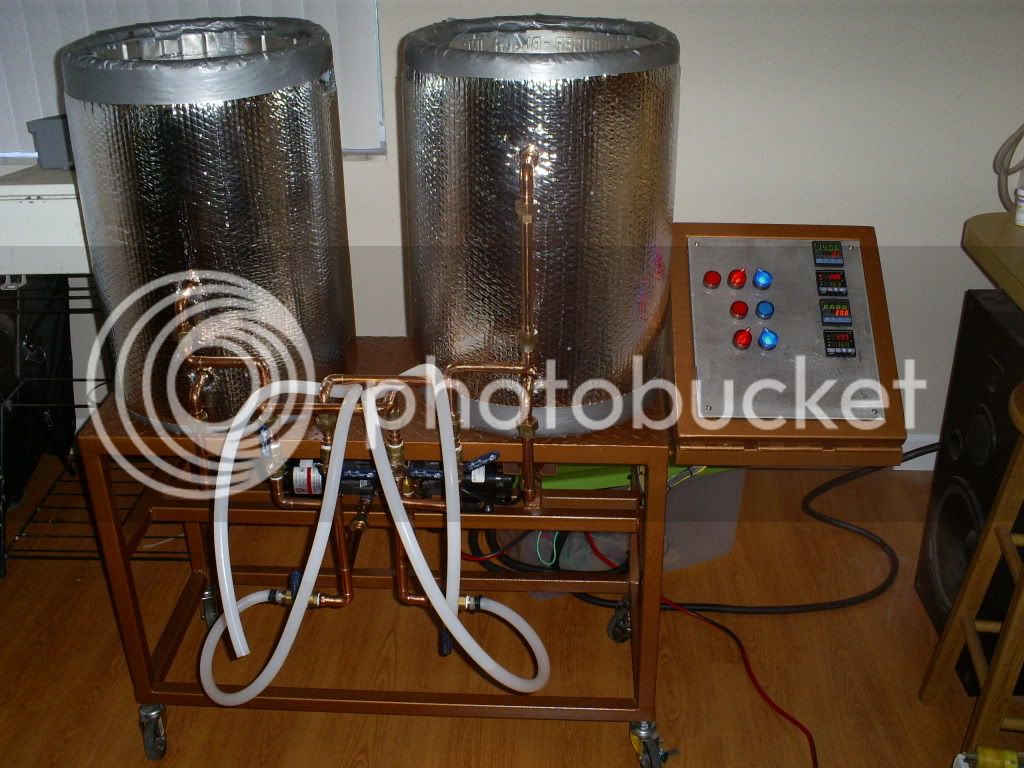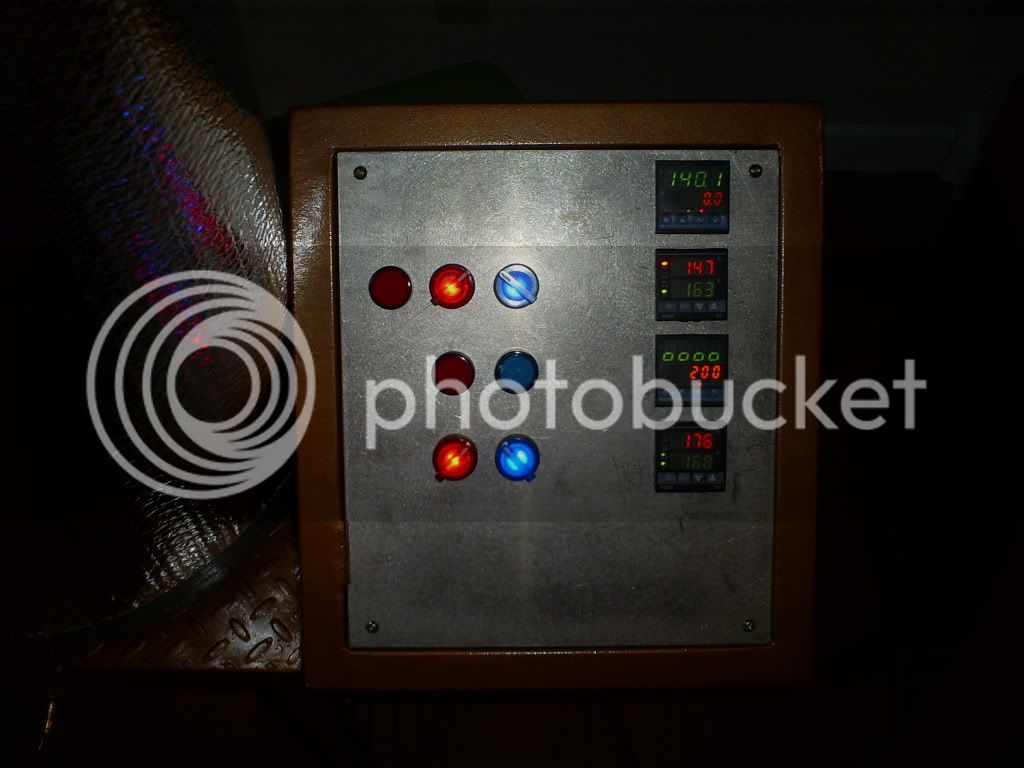i'm looking to do a similar build but on a vertical stand because of space issues ( i rent ) looking back what would you do differently?
Well, I initially wanted to add an HLT to it, but after brewing on it for several sessions I am going to leave it as is. If I ever really need to bump my efficiency I just set aside a gallon of the fresh cycle water before it cross circulates. After the cross circulation is finished I toss the water set aside and recirculate it in the mash tun and then pump it over to the BK. It isn't something I have to do very often. In fact it's easier just to order an extra pound of base grain or what not.
What I would change is this.
The RIMS heat exchanger, install a high/low 120/240v option. Heating strike water takes for ever with 120v! 240v will speed this up a bunch. 120v is enough to maintain temps. Step mashes are really out of the question running 120v too, also insulation and a lid is a MUST.
I would change the return on the HLT from the ring to a piece of silicone tubing to sit on top of the grist. Way too much heat is lost through the ring at high flow rates. The nice thing about the ring is if the mash temps get too high, jacking up the flow rate drops temps lightning fast.
I have added sight glasses to both, it makes cross circulation a little easier. You can watch the levels and see which side is pumping faster than the other and compensate accordingly. It is also serves as a warning before you accidentally suck one of the vessels dry by accident, causing the pumps to loose prime.
Pump location, I have to prime the pumps every time by opening the dump valves. It isn't too bad but I would rather not have to do it. If you can find a pump that self primes a little better then that may be a solution. Otherwise I would mount the heads of the pumps vertically and try to eliminate as many horizontal pipe runs as possible. Mounting the RIMS vertically would help too.
I have had no problems with the RIMS located on the intake side of the pump.
Some kind of flow meter on the output of each pump would make flow matching easier too.
On the BK side I would try to figure out how to plumb some kind of plate chiller in line. So when re-circulating for the whirl pool I can run the wort chiller at the same time, dropping the batch temps quickly. Dropping an immersion chiller is a bit of a PIA. I would also plumb the cooling water output side of the plate chiller to a dump valve and the MLT. I re-use my cooling water for my clean in place.
The BK has never been removed, which is nice. But the HT does need to be removed to rinse the last bit of grain out. A quick blade type crimp on connection between the HLT and the chassis ground. It is something I keep meaning to do but don't remember until I go to take the HLT off, so I am constantly having to unscrew and re-screw the ground lug

. I quick disconnect for the RTD is a must on the MLT, you can save some pennies and get the non disconnect version for the BK. I would splurge and get a nice RTD for the RIMS controller. Right now I am using a type K TC.
If I had the ca$h I would use stainless tubing and Swagelock fittings.
Ebay switches and PIDs are crap... Spend the extra couple of bucks for the electrical controls stuff at Automation Direct, and the extra coin for the Aubur PIDs and RTDs. Both of these companies stand behind their products and are very helpful and quick to respond to issues. I don't have experience with Ebay SSRs, but most here seem to have good results with them. I splurged and got the expen$ive Din rail ones from AD.
Keep us updated, I would really like to see what you come up with.





